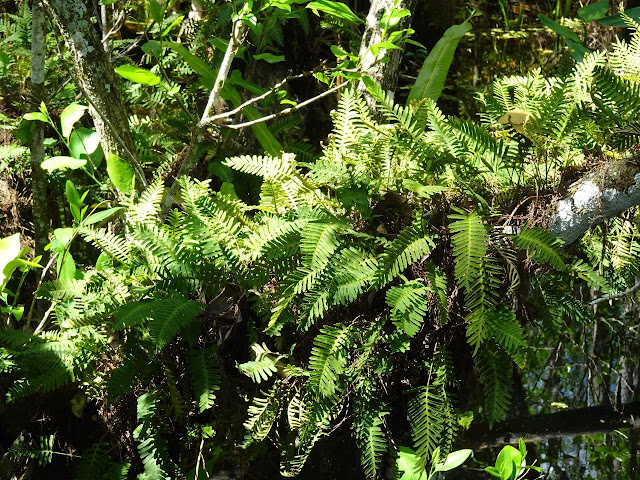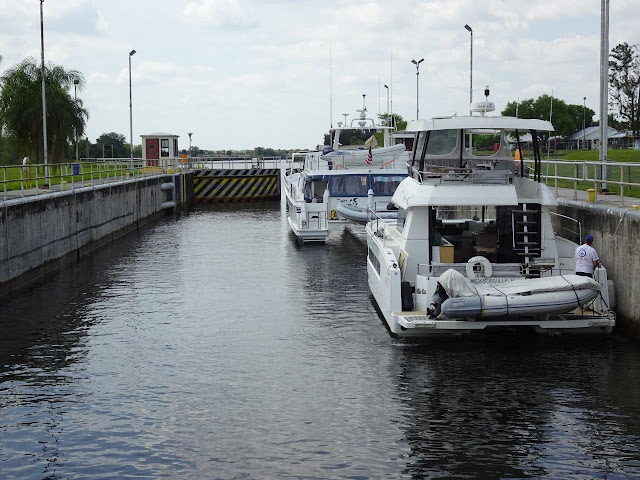A couple of weeks ago, I wrote about the difficulties of
getting service for a motorhome, but I was mostly talking about getting service
on items that are part of the chassis on a Class C or cab-over motorhome—the
wheels and base vehicle with the front cab or cutaway attached, sold by an
automaker or truck manufacturer to the RV manufacturer.
Class A or bus-type motorhomes aree also manufactured on a
chassis, gas or diesel, built by a truck manufacturer such as Ford,
Freightliner, Prevost, etc. The
difference is that the Class C version has a front cab that comes with the
chassis, and the Class A has only the platform and the engine, transmission,
wheels, brakes, etc.
Bumper-pull trailers and 5th wheel trailers are
usually built on a platform that includes only wheels and tires.
In any of these instances, an RV manufacturer adds the
“camper” parts on top of the basic RV
platform. They start out by building on
a floor, adding wiring and utilities such as fresh water and sewer plumbing and
fixtures, sinks for washing dishes and hands in the bathroom, shower walls and
doors, refrigerators, stoves, and furniture.
Finally, they add walls made out of a framework and layers of foam and
fiberglass, plus a roof, also usually made of fiberglass, and other
waterproofing. (FYI - Putting the furniture and appliances in before the put the walls up is one reason why some owners have to use a chain saw to cut up their old couch to get it out in order to replace it.)
THE PROBLEM
Most of these added on things are made by a handful of
specialized manufacturers, NOT the same manufacturers of the plumbing,
fixtures, refrigerators, stoves, and furniture you buy and put in your
homes.
So, when you get a leak in your water heater or your
refrigerator breaks down, you cannot go to Best Buy or Lowes and pick up a
replacement. Because your lighting runs
on 12 volts, you cannot even go to a hardware store and pick up replacement
bulbs! You are pretty much stuck with
getting parts and service from an RV dealer, although bulbs are sometimes
available from auto parts or marine stores.
If you are handy and have a lot of experience owning RVs and
repairing things that are broken in it, it is possible to do some of
your own repairs, but it is likely that you have never replaced parts in an RV
water heater, water pump, refrigerator, or furnace. Even the toilet works differently than the
ones in your home!
So, why not just call the local RV dealer and make an
appointment? First, depending on when
you are using your rig, everyone else is using theirs, so the wait time for a
service appointment is likely to be 6-8 weeks, or even longer. The dealer will tell you to bring your RV in,
they will check it out, order parts, and let you know when it is repaired, but
you will still have to wait for a service appointment. In the meantime, it will be parked in a rear
area of their lot where they store rigs that need repair when they can get
parts and "get around to it." Vacation in
two weeks? Forget it. On the road? You might need a hotel.
In addition, most RV dealers do not seem to carry adequate
parts for multiple brands of RVs, so even if the dealer takes pity on you and
gets you in fairly fast, they might not have the part and will have to order it
from somewhere. (It does help to choose
an RV service place that sells your brand of RV, however.) Some things are pretty standard, however,
such as Shurflo water pumps. For some
unknown reason, I have gone through a lot of water pumps and never had problems
finding a service place that had mine in stock.
However, if you hang around fellow RV travelers long enough, you will
hear the horror stories of getting parts.
In September 2022, my AC unit quit and a mobile technician determined it
needed to be replaced. It had quit in
Napa, CA, on Labor Day weekend when it was 108 degrees out, so after visiting
my son and his family, I headed for the coast where I knew it would be
cooler. Since I had been planning to head
up to Washington and Oregon, this made the best sense. Once I got to Oregon and comfortably camping
at 65 degrees, I started calling every Camping World and RV service place I
could find in Washington and Oregon to find one in stock. I wanted the same model so I did not have to
deal with someone cutting a different-sized hole in my roof and getting into
other difficulties. Amazon had one they
could ship in 6-8 weeks. Ditto for the
AC manufacturer. After several hours and a couple of dozen
calls, I found one in stock at a Camping World just south of Portland, but it
took three weeks to get a service appointment. It was nice along the coast, so I really did not mind, and eventually got it replaced.
Another example. In January of this year, my refrigerator door fell off
because one of the plastic hinges was broken. (Who in the heck makes hinges out of plastic?) To make it worse, the plastic hinges were
part of the door, so I could not just replace a hinge—I had to buy a complete
new door at a price of $360, and it would take several weeks to deliver. More
calling around and finally found a dealer who had access to a warehouse where there was
one in stock. I could pick it up in two
days, but they could not install it because they were backed up 6 weeks. So I bought a portable cooler and moved most
of my food into it. I
picked up the door, and then went online to try to figure out how to replace a
Dometic refrigerator door. I was able to
pull out the decorative panel from the old door and put it in the new
door. Could not find a mobile mechanic,
but a neighbor and I finally figured out how to get the old door off and the
new door installed.
Things should NOT have to be this difficult, should
they? Getting broken things fixed is
especially a problem for full-timers like me who really have no place to stay
while they are waiting for parts or service. We do a lot of making do and getting creative.
SOME SOLUTIONS
-
OK, first I will admit I have
often used the “I am an older lady traveling alone and have no place to stay”
plea, and it sometimes works.
- If I know what is wrong and what
parts I need, I will try to get a service appointment and ask them if they have
a specific part. If I don’t know what
part my rig takes, I will call the manufacturer’s parts department and give
them my VIN number so they can look up my RV and give me a part number. I can then make sure the service place has
the part before I drive there to get it replaced. Or I can get it shipped directly to me.
-
I also make sure the dealer knows
that I am a full-timer and that I will be waiting there while it is being
fixed, and that I cannot leave it overnight unless absolutely necessary. (Note: Some dealers have hookups in a parking
lot you can use to stay overnight, so ask. I have even spent the night in my rig in a truck repair parking lot where they were able to hook me up to 30 amps. It was right next door to police station in small town, so I figured I was safe for the night. )
-
If I know something like a slide
roller is broken, and I have the part number. but the dealer says it will take
three weeks to get the part, I will go online and look at Amazon and several
other places that keep inventories of RV parts.
Sometimes I can get it a lot faster that way.
- Added Tip: If no one has a part, and it is on "forever" back-order, try the manufacturer customer parts facility. My Fleetwood was made in Decatur, IN, and they have a big customer service repair facility plus a service parts building. The big advantage is that since they are still making motorhomes, they have a stockpile of parts. It is also on the way to Ohio where my younger son lives, so I drive past or nearly past there once a year. When my rig was fairly new and my steps broke, and I could not get a replacement anywhere, I made an appointment at the customer service facility in Decatur. They had the steps and replaced them quickly. (Only problem is with older rigs, that part may no longer be made or available.)
As you can see, getting the right part is often the hard part. A few days ago, my toilet flush ball stopped working and it could not be replaced, so I called around to find a replacement toilet. Closest one I could find was in Orlando, which is over a three-hour drive each way, so not practical. Having one shipped from there would take 7-10 business days, at which point I will have left my current campground. I finally found one, believe it or not, at Walmart Online, which would arrive in three business days. It just arrived today, and it is the right model and not broken, so tomorrow I am going to call around to find a mobile RV technician who can install it for me. (Note that this is a person who works on things inside your RV that were installed by the RV manufacturer, not the motor or transmission or tires, etc.)
You can often find a mobile RV technician by asking the campground hosts or owners or by just asking neighbors. There are several organizations that certify RV technicians--some do this online and others require a few weeks at a training school. Personally, I prefer the one that is non-profit and requires hands-on training at a training site in Texas, but in any case, make sure you get recommendations from whoever you call.
Any comments of suggestions from anyone???

































































